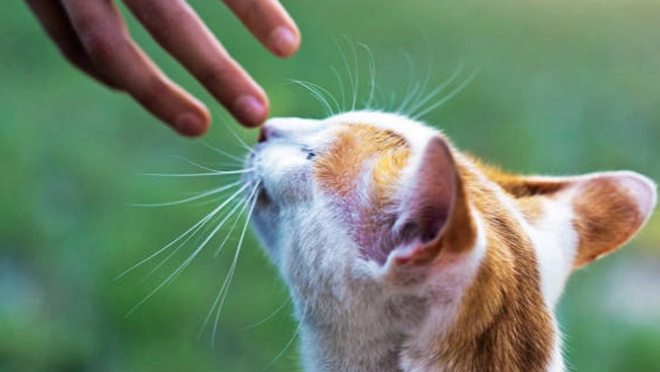Cats perceive owner's smell from stranger's, research finds
Cats perceive owner's smell from stranger's, research finds

A new study has found that domestic cats can distinguish between the scent of their owner and that of a stranger.
Conducted by Tokyo University of Agriculture, the research revealed that cats spent noticeably more time sniffing tubes containing the scent of unfamiliar individuals than those with their owner’s odour.
According to the researchers, this indicates that cats are capable of telling the difference between familiar and unfamiliar humans based on smell. However, it remains uncertain whether they can identify specific individuals.
While it is well established that cats use their keen sense of smell to recognise and interact with other cats, this study is among the first to explore whether they can also differentiate between people by scent.
Previous research has shown that cats can recognise humans by their voice, follow a person’s gaze to locate food, and adjust their behaviour based on emotions detected through scent.
In a new study published on Wednesday, researchers tested 30 cats using plastic tubes containing three types of swabs: one with the owner’s scent, one with the scent of a stranger of the same sex as the owner, and one clean swab with no scent.
The scented swabs had been rubbed under the armpit, behind the ear, and between the toes of the owner or the unfamiliar person.
The findings revealed that cats spent significantly more time sniffing the swabs with the stranger’s scent than those with the owner’s scent or the clean swab.
This suggests cats can distinguish between familiar and unfamiliar human smells, the researchers said.
This behaviour aligns with previous observations that cats, especially weaned kittens, tend to sniff unfamiliar female cats longer than their mothers.
However, the researchers emphasized that the results do not confirm whether cats can identify specific individuals like their owners.
Study co-author Hidehiko Uchiyama noted that since the experiment only involved familiar and unfamiliar scents, further research is needed.
He explained that future behavioural tests using odours from multiple familiar people would be required to determine if cats show unique reactions specifically to their owner’s scent.
Serenella d’Ingeo, a researcher from the University of Bari who was not involved in the study but has previously researched how cats respond to human scents, said the findings show that cats react differently to familiar and unfamiliar odours.
However, she cautioned that the motivations behind their reactions remain unclear. “We don’t know how the animal felt during the sniffing… We don’t know, for instance, whether the animal was relaxed or tense,” she explained.
D’Ingeo also noted that since the odour samples were presented by the cats’ own owners, who naturally contribute their scent to the environment, this might have heightened the cats’ interest in the unfamiliar odours.
“In that situation, owners present not only their visual presence but also their odour,” she said. “So of course if they present other odours that are different from their personal one, in a way they engage more the cat.”
The authors of the study concluded that cats use their sense of smell to recognise humans. They observed that after sniffing the tubes, cats often rubbed their faces against them—a typical scent-marking behaviour.
This suggests that sniffing might be an exploratory action that comes before marking something with their own scent. However, the researchers stressed that this link needs further exploration, along with the question of whether cats are truly able to recognise a specific individual based solely on their scent.


